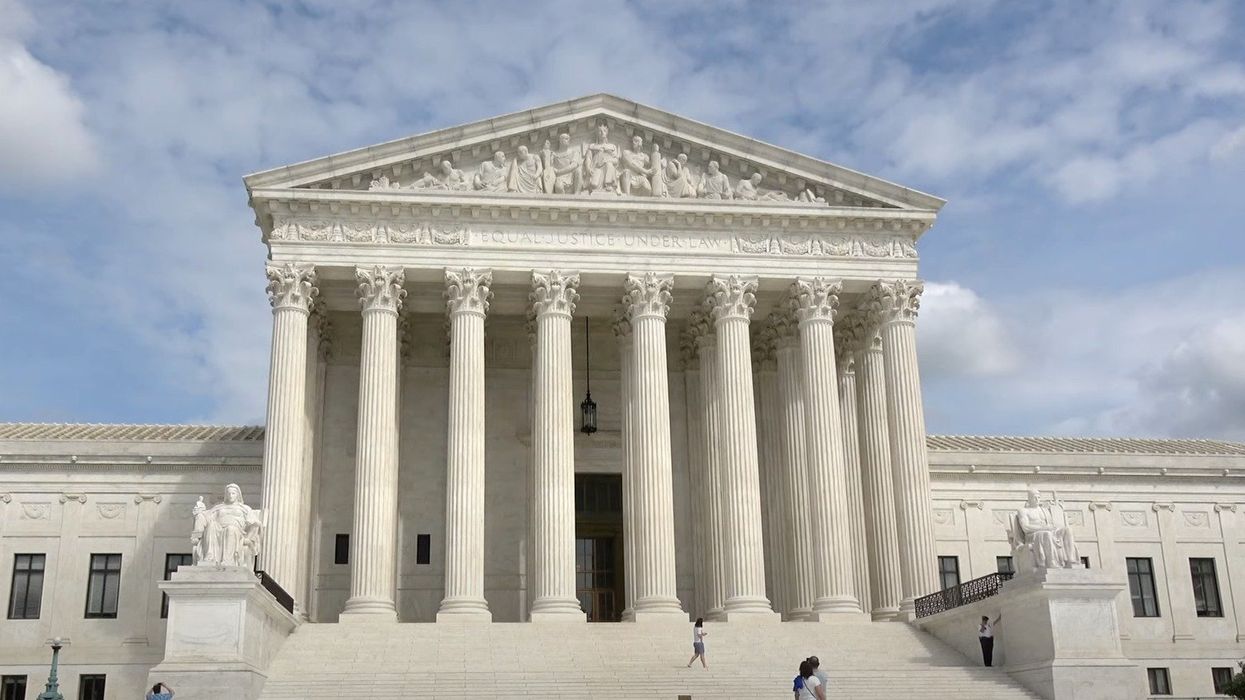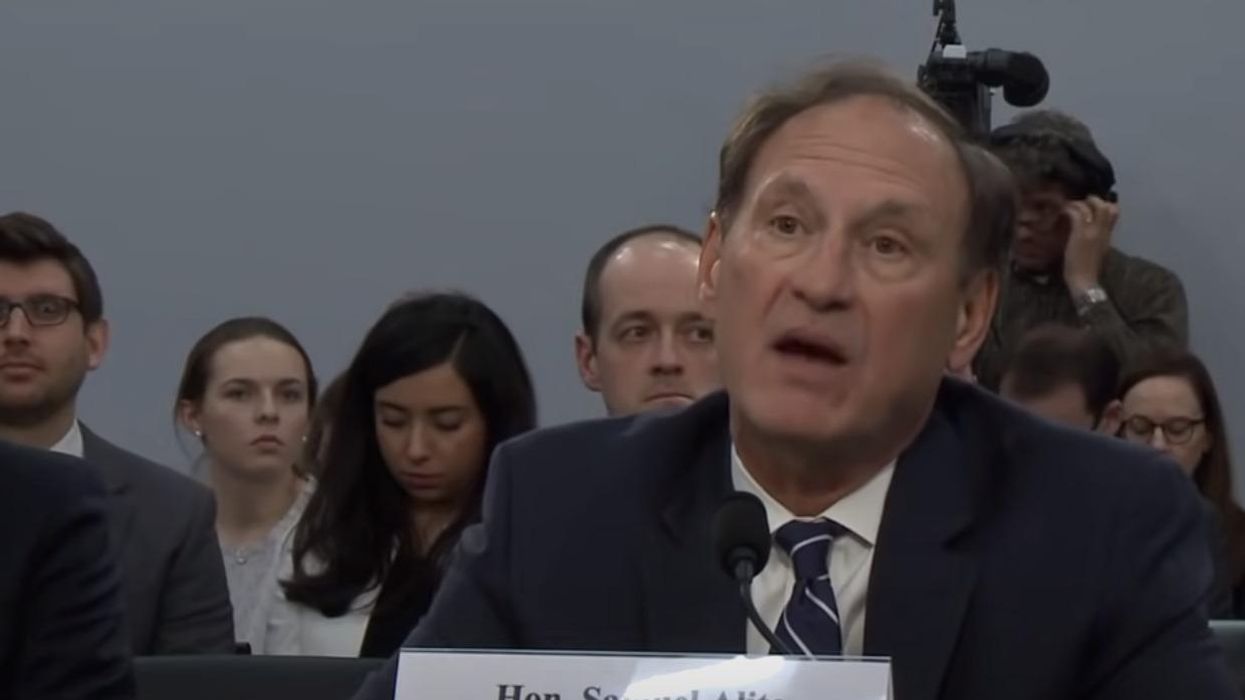The Supreme Court's 'Immunity Club' And The Advent Of Fascist Jurisprudence
I just watched a full hour of some very, very smart legal eagles analyzing what it means that the Supreme Court has decided to hear Donald Trump’s immunity appeal. Six experts were interviewed by Nicole Wallace on MSNBC. She’s good. Every one of the experts was good. The whole show did an excellent job of running through all the permutations and combinations of what it could mean that the Supreme Court will hear oral arguments of the Trump appeal on April 22, and what that could mean in terms of when they might issue a decision, and what that would mean about when the case before Judge Tanya Chutkan might come to trial.
I don’t care how you cut it, this is the terrifying result you get when you elect a raving fascist lunatic like Donald Trump and he gets the opportunity – aided and abetted by right wing puppets in the Senate and their right-wing corporate puppeteers – to appoint a gaggle of starry-eyed authoritarian moonies to the highest court in the land. It takes only four justices for the Supreme Court to agree to hear a case. We learned today that four of the justices who went through the authoritarian training camp run by the Federalist Society, which is backed by a small group of fascist billionaires, got together and decided to hear Trump’s case, which makes the absurdly authoritarian claim that he, and he alone, is above the law.
Justice Clarence Thomas, whose wife participated in Trump’s conspiracy to overturn the 2020 election, has been supported monetarily by one of the right-wing billionaires that funds the Federalist Society. Although the court didn’t announce the names of the justices who voted to take the Trump case, it is a certainty that Thomas was one of them. The other three are no better, because all six of the Republican appointed justices attend Federalist Society private functions, they give speeches to Federalist Society gatherings, they hire clerks approved by the Federalist Society.
It's almost like it wasn’t the Supreme Court, it was the fucking Federalist Society that voted today to hear Donald Trump’s appeal.
The details of the arguments the court will hear in April are almost too depressing to go through. Trump’s lawyers told the D.C. Court of Appeals that his claim of immunity would cover him if while president, he had ordered Seal Team Six to assassinate a political opponent, because that would have amounted to an “official act,” and thus it would come under his immunity from prosecution. If that isn’t enough for you, Trump’s lawyers told both the D.C. Court of Appeals and the Supreme Court that anything Trump did to overturn the election, such as interfering with the counting and certification of electoral ballots, would fall under his claim of immunity, because what he did was an official act.
In fact, at least two of the legal experts on MSNBC this afternoon said the argument before the Supreme Court in April will come down to the court deciding what is an official act, and what isn’t.
The same Donald Trump who is claiming absolute immunity for anything he did as president is yapping at his campaign rallies that the first thing he will do if they elect him president is prosecute Joe Biden for pretty much everything he has done as president since the day he took office, even though unlike Trump, he has been charged with no crimes.
Do you think that incredibly obvious contradiction – that Trump has immunity, but Biden doesn’t -- will be argued at the Supreme Court on April 22? Do you think it will even be mentioned?
Not at the Supreme Court immunity club, it won’t
One of Clarence Thomas’ close friends bribed him with a “loan” of about $250,000 to buy a luxury motor home. The “loan” was never paid back. Another of his close friends, Harlan Crow, bribed Thomas by buying his mother’s house, renovating it, and then allowing her to continue living in it rent-free. Thomas never paid a dime of taxes on what was, on its face, a gift from Crow.
Clarence Thomas has been allowed to live a life of bribery and corruption. But nothing has been done to him because the lack of a Supreme Court code of ethics makes him effectively immune from prosecution.
How do you think he will vote after the Trump immunity case is heard on April 22? How about Brett Kavanaugh, who got away with sexually harassing a young woman while he was in high school and then perjured himself about it before the Senate? He’s in the immunity club. How do you figure he’ll vote?
How about Justice Samuel Alito, who flew for free on a billionaire’s private jet and stayed in a $1000-a-night luxury fishing lodge and whooped it up with his billionaire benefactor and his billionaire pals and drank their expensive liquor and then flew home on the private jet – all without spending even a dime of his own money to pay for his luxury vacation? He’s a paid-up member of the immunity club. Got any guesses how he’ll vote?
Amy Comey Barrett hasn’t taken any billionaire bucks that we’ve heard about, but she doesn’t need to, because her immunity comes from the same place her instructions do – from God himself. Amy believes the United States is a “Christian nation,” and wishes fervently that its laws adhered to the laws of the Bible, which of course immunizes all kinds of people from punishment for all sorts of things. Hers is an immunity club membership with a special dispensation. She’ll just follow God’s will. That’s immunity enough.
There are four votes to hear the Trump appeal.
All they need is one more. And even if they don’t end up endorsing Trump’s arguments that he can commit murder and get away with it, and all this other stuff is just chicken feed, all they’ve got to do is dick around deciding the case until the end of their term on July 1, and that alone will make it nearly impossible for Judge Chutkan to start the Trump trial before October 1, and what do you know, but that’s within the DOJ window before an election when no prosecutions or investigations of a candidate for election can begin.
Is the fix in? Not completely, but it’s just terrifying how close we’re getting to having a country run by a small club of billionaire fascists who of course are all paid-in-full members of the same immunity club their paid-for Supreme Court justices are members of.
Lucian K. Truscott IV, a graduate of West Point, has had a 50-year career as a journalist, novelist, and screenwriter. He has covered Watergate, the Stonewall riots, and wars in Lebanon, Iraq, and Afghanistan. He is also the author of five bestselling novels. You can subscribe to his daily columns at luciantruscott.substack.com and follow him on Twitter @LucianKTruscott and on Facebook at Lucian K. Truscott IV.
Please consider subscribing to Lucian Truscott Newsletter, from which this is reprinted with permission.




